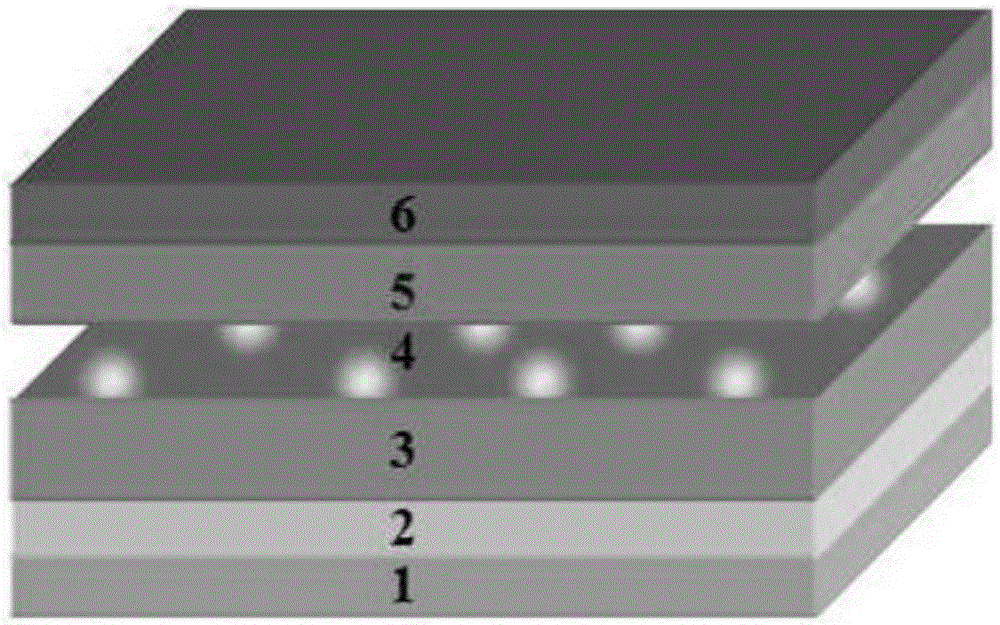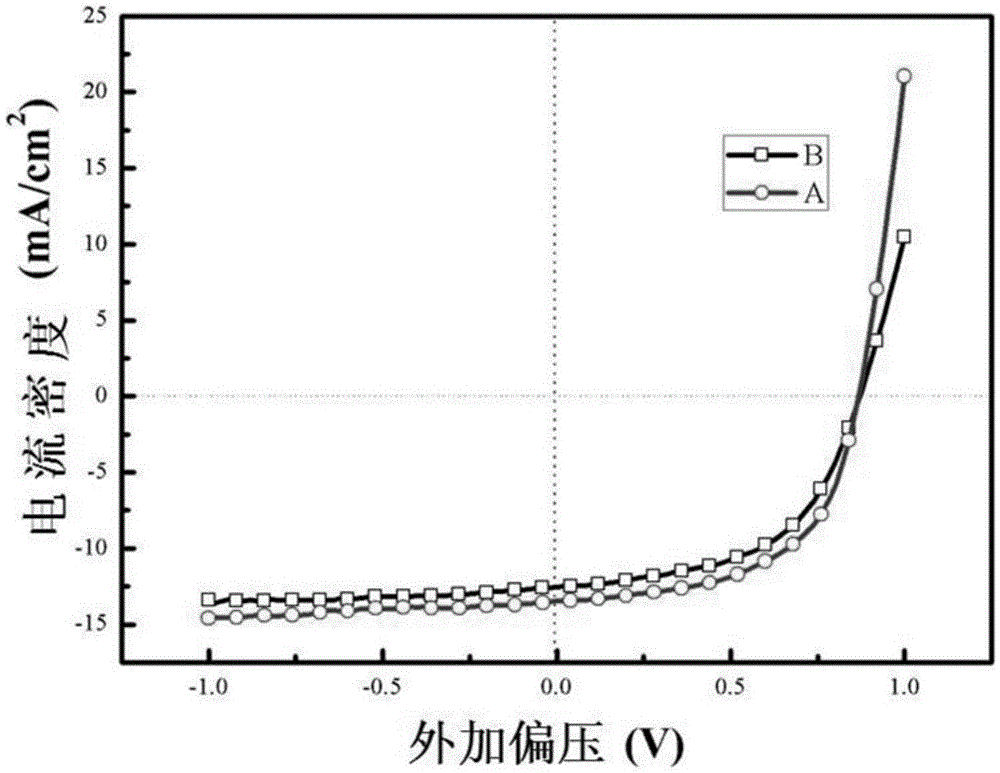Organic solar cell based on polyfluorene cathode interface self-assembly anode plasma resonance effect and preparation method of organic solar cell
A technology of anode plasma and solar cells, applied in ion implantation plating, semiconductor/solid-state device manufacturing, circuits, etc., can solve problems such as low exciton transport capacity
- Summary
- Abstract
- Description
- Claims
- Application Information
AI Technical Summary
Problems solved by technology
Method used
Image
Examples
Embodiment Construction
[0027] 1) Substrate processing
[0028] Put the ITO conductive glass into a beaker, ultrasonically clean it with acetone, absolute ethanol, and deionized water for 20 minutes, and dry it with nitrogen after cleaning;
[0029] 2) Preparation of self-assembled polyfluorene transport layer
[0030] a, ITO surface hydroxylation treatment
[0031] The ITO substrate was soaked in a pre-prepared 1mg / mL methanol solution of KOH for 20h, and it was subjected to hydroxylation treatment, so that a layer of OH was suspended on the surface of the ITO.
[0032] b, Self-assembly interface preparation
[0033] Polyfluorene PDHF-Cl is dissolved in tetrahydrofuran solvent and prepared as a solvent of 1000PPM for use, and then the obtained PDHF-Cl solvent is spin-coated on the surface of hydroxylated ITO by spin coating, and the spin-coating speed is 1000rpm; The ITO conductive glass with PDHF-Cl is annealed at 100°C for 20 minutes; during the annealing process, the Cl in the PDHF-Cl molecule...
PUM
 Login to View More
Login to View More Abstract
Description
Claims
Application Information
 Login to View More
Login to View More - R&D
- Intellectual Property
- Life Sciences
- Materials
- Tech Scout
- Unparalleled Data Quality
- Higher Quality Content
- 60% Fewer Hallucinations
Browse by: Latest US Patents, China's latest patents, Technical Efficacy Thesaurus, Application Domain, Technology Topic, Popular Technical Reports.
© 2025 PatSnap. All rights reserved.Legal|Privacy policy|Modern Slavery Act Transparency Statement|Sitemap|About US| Contact US: help@patsnap.com


